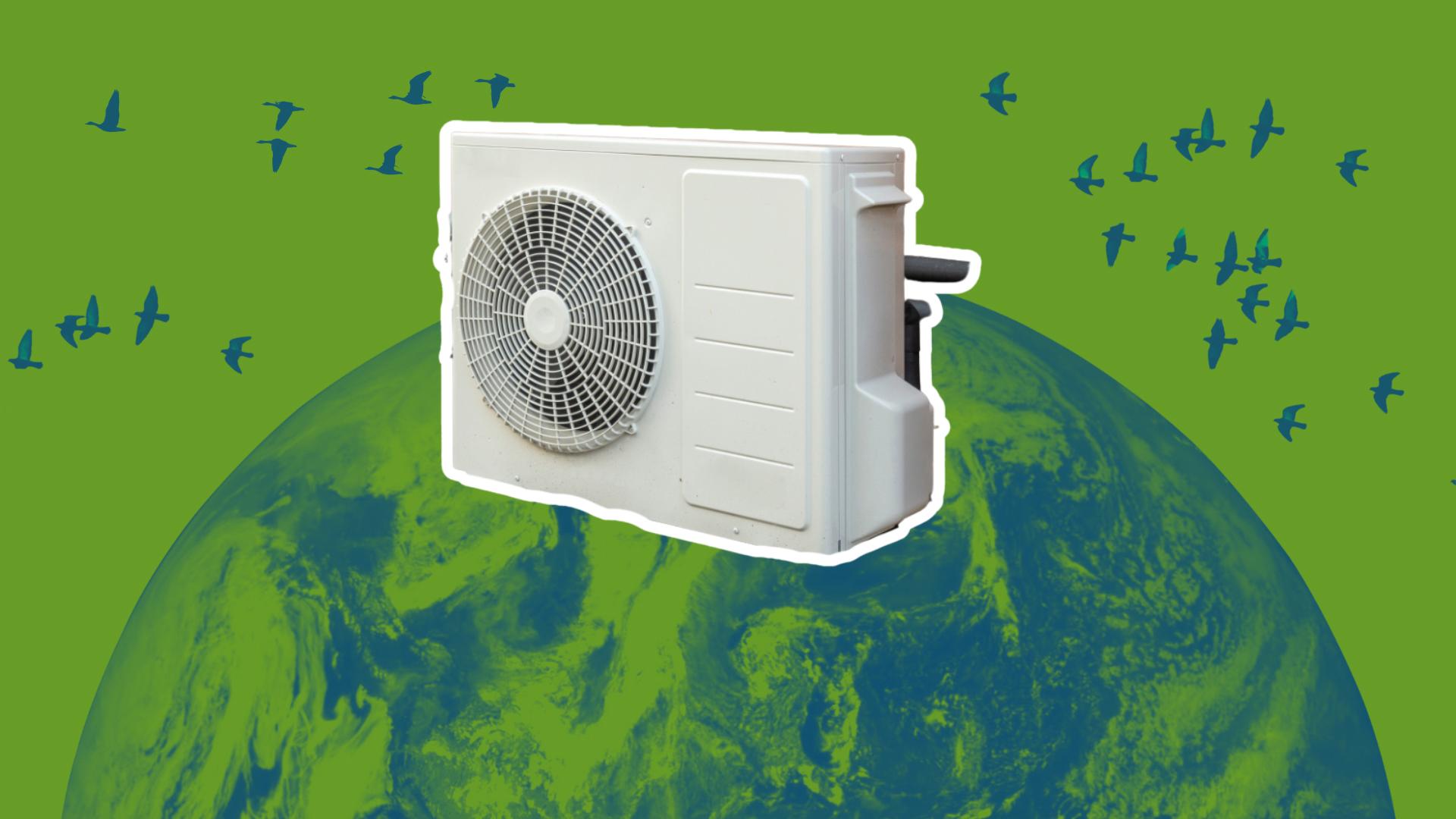New EPA coolant rule is a climate crisis no-brainer

This article originally appeared on The Hill.
The EPA’s new rule to phase down the manufacturing and use of hydrofluorocarbons (HFCs) — the coolants used in air conditioners and refrigerators — will likely be a drop in the bucket for consumers but a huge step forward on global climate action. The move is a critical step toward the Biden administration’s larger goal of reducing 55 percent of emissions by 2035. What you might not know: The climate impact of this rule could be more than doubled if it’s coupled with efforts to properly dispose of the refrigerants in the appliances already in people’s homes and businesses.
Project Drawdown, the non-profit where I explore science-based solutions to the climate crisis, ranked switching to alternative refrigerants one of the top 10 climate solutions we have in-hand today. The EPA estimates that phasing down HFCs globally can avoid 0.5 degree Celsius of warming by the end of the century—a large feat with real-world benefits to every community. However, using alternative coolants in new appliances is only half of the potential benefits, as a focus on proper refrigerant disposal is critical to maximizing success.
HFCs became widely used after researchers in the 1970s discovered that chlorofluorocarbons (CFCs), the main refrigerants used at the time, were causing a hole in the ozone layer and leading to more people getting skin cancer as a result. In a 1987 response, nations around the world created The Montreal Protocol, a global agreement to phase out the production and use of ozone-depleting substances like CFCs. Substituting HFCs for CFCs helped heal the ozone layer, but still warmed the planet. Although HFCs and other fluorinated gases cause “only” about 2 percent of Earth’s current warming, each molecule of HFC can trap between 1,000 to 9,000 times more heat than a molecule of CO2. In short, a little bit has a big impact.
The challenge continues to grow. As temperatures warm and more of the world’s population accumulates additional wealth, demand for cooling increases. There are currently 3.6 billion cooling appliances in use today, and that number is increasing at a rate of 10 devices per second. Energy demand for powering these appliances has increased three-fold since 1990 and is projected to double again by 2040.
The good news: Alternative, climate-friendly coolants already exist and the transition to using them is already underway. In 2016, the Kigali Amendment to the Montreal Protocol created a legally binding agreement to phase down the production and use of HFCs, with developed countries committing to an 85 percent reduction between 2019 and 2036.
Despite the U.S. failing to ratify the amendment, many American manufacturers endorsed it and began phasing out HFCs to stay competitive in the global market. The American Innovation and Manufacturing Act (AIM), enacted in December 2020 as part of a COVID-19 relief package, gave the EPA new authority to phase down HFCs in accordance with the Kigali Amendment. The U.S and China indicated in April that they will join the more than 120 nations and island states that have already signed amendment. Meeting target reductions is certainly within reach—the European Union is on track to phase down HFCs by 2030. Changes in the U.S. will accelerate the global shift through our manufacturing and imports of cooling appliances.
This new EPA rule puts us on a path to reduce damage caused by future appliances. But what about those 3.6 billion cooling devices that are currently in use? Or the countless more that are in salvage yards? Building a cleaner tomorrow is great, but we can’t move forward without taking care of today’s mess.
Coupling the next generation of refrigerants with proper disposal and high-efficiency appliances will further advance climate benefits. In the U.S., 16 million refrigerators, freezers, window air conditioners and dehumidifiers are thrown out each year, yet only a little more than 600,000 were properly discarded through the Responsible Appliance Disposal (RAD) Program.
Project Drawdown estimates that removing or destroying the coolants in these appliances could more than double the impact of using alternative coolants in new appliances. Groups like Tradewater show that a market can be created for eliminating (by collecting and incinerating) the emissions in discarded appliances.
Further, additional gains are possible by incentivizing high efficiency air conditioners. High-efficiency appliances are available today and there are promising new options in the near future. The Global Cooling Prize recently awarded two residential-scale air conditioner prototypes that offer five times lower impact than the standard ones used today.
This policy change will make it easier for people to purchase appliances that use alternative coolants. One of the best things we as individuals can do to further reduce our energy used for cooling is to purchase Energy Star-rated appliances, using smart thermostats and insulating our homes. This carries a cost not every renter or homeowner can bear, but it’s important to keep in mind when changes can be made. Perhaps most important, proper disposal of old cooling appliances through the Responsible Appliance Disposal (RAD) Program will ensure that HFCs are captured or destroyed and don’t leak into the atmosphere.
Although systemic and equitable change is needed across all sectors to address the climate crisis, targeted policies like this one are necessary and will have an immediate, outsized impact. Destroying existing HFCs — the current mess we can’t avoid — and using more efficient appliances will transform this rule from good to great in a moment where big climate wins deserve fast action.
Paul West is an ecologist exploring science-based solutions to help people and nature thrive on a warming planet. He is the director of Special Projects at Project Drawdown and a researcher at the University of Minnesota. Follow him on Twitter: @coolfireecology.











